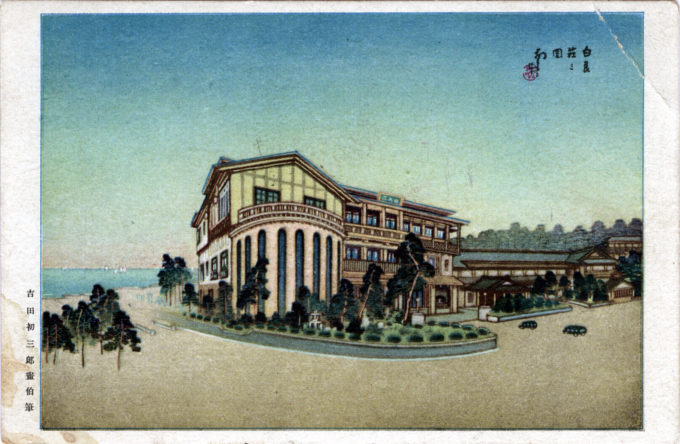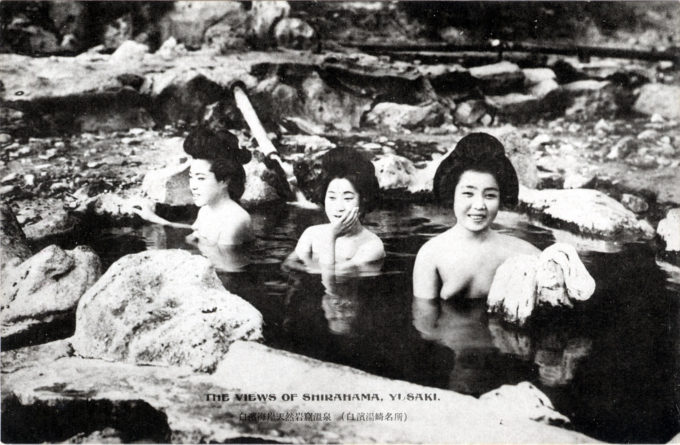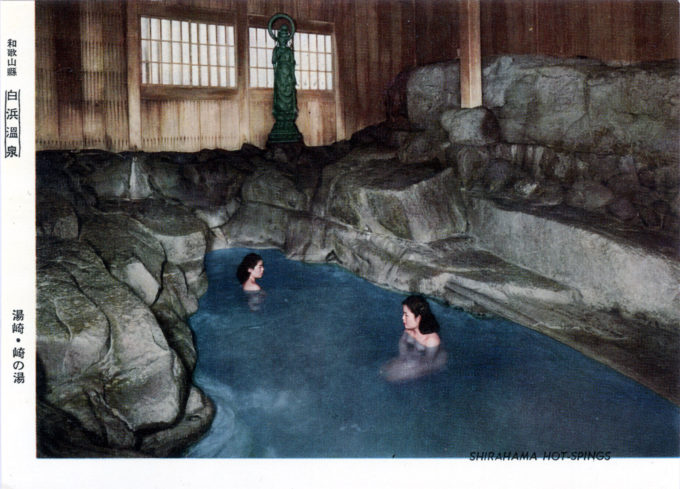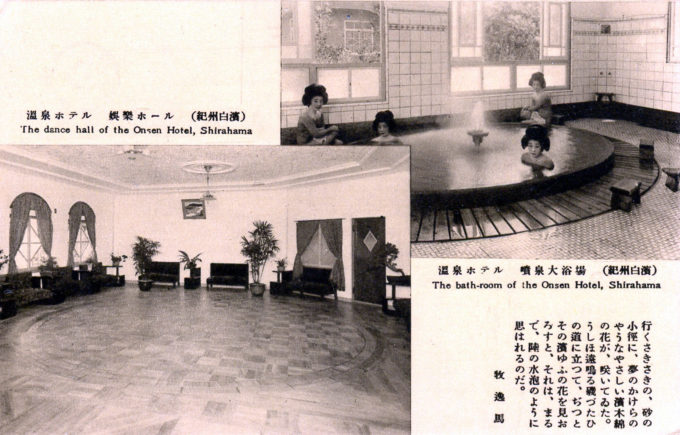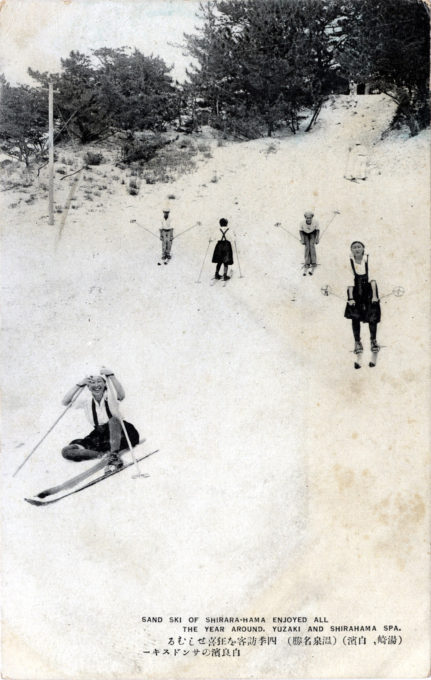
“Sand ski of Shirahama enjoyed all the year around,” Shirahama beach, near Wakayama on the Kii Peninsula, c. 1930.
“The hot springs of Shirahama (Wakayama Prefecture) are well known as one of the three famous old spas of Japan, mentioned in records as far back as AD 657.
“While having being known and used under different names throughout premodern times, from 1880 onwards Shirahama became an established curing place for the city dwellers of the Kansai area due to its convenient location and regular connections by ship to other parts of the country.
“In 1919, a development company was founded in cooperation between a local landowner and an entrepreneur from Osaka. The plan published by the company in 1921 was modeled after the modern resort created by German colonists in Qingdao in China before the First World War, including beach facilities, Western-style hotels, a music hall, indoor swimming pools, botanical gardens, an aquarium, a zoo, a library, and an outdoor theatre – the whole range of Western cultural resort facilities.
“In reality, development concentrated on roads, parks, sports facilities and digging additional hot springs, thus adjusting to the needs of Japanese urban customers and the wishes of the local community.
“In 1923, the development company paid local villagers to give up their right to use the white sand of the beach for glass production. In 1929, the beach was officially opened, with changing rooms, hot showers, beach umbrellas, slides and diving boards.
“When the railway reached Shirahama in 1933, it was ready to be firmly integrated into the pleasure periphery of Kansai. Shirahama, literally meaning ‘white beach’, attracted many young visitors through its ‘whiteness’, consisting of the whiteness of its beach, of its modern concrete landscape, and of the young women’s white skin, which successfully helped to create the image of a European-style beach resort.”
– Japanese Tourism: Spaces, Places and Structures, by Carolin Funck & Malcolm Cooper, 2013
“One of Shirahama’s main attractions is its crescent-shaped white-sand beach; ‘Shirahama’ means ‘white beach’ or ‘white bay’. In the 1960s, when Shirahama was connected by rail to Osaka, the city became a popular tourist destination, and blocky white hotel towers were erected along the coastal road.
“The increased development accelerated erosion, and the famous sand began to wash into the sea. Worried that the town of White Beach would lose its white beach, according to a city official, Wakayama Prefecture began in 1989 to import sand from Perth, Australia, 4,700 miles away. 745,000 cubic meters was imported over 15 years.
“In 2000, Shirarahama Beach and Waikiki Beach (Honolulu, Hawaii) established a good-will ‘sister beach’ relationship.
- Shirahama Onsen, c. 1920.
- Shirahama Onsen, c. 1950.
“Nanki-Shirahama Onsen is considered one of the the ‘Three Ancient Springs’ in Japan (along with Dogo Onsen and Arima Onsen). Ancient texts beginning 1200 years ago (ca. 650 CE) record visits to Shirahama hot springs by emperors and members of their courts. In the Edo Period, visiting hot springs became common not only among feudal lords and samurai but also common people, and the basic structures of today’s spa settlements were completed.”
– Wikipedia


